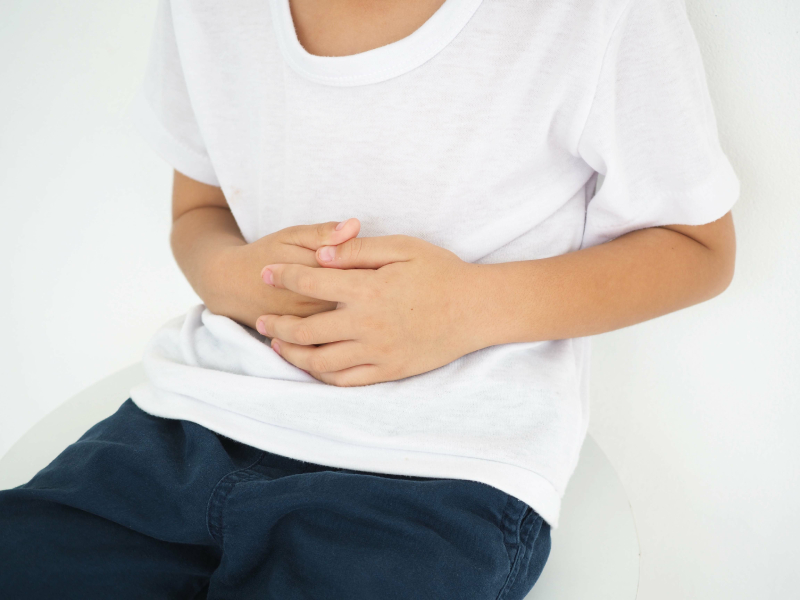What Causes GERD?
Reflux or ‘GERD’ (Gastroesophageal Reflux Disease) is often caused by something that affects the lower esophageal sphincter (LES). This sphincter is a muscle that opens to let food into the stomach. If it stays open too often or for too long, stomach acid rises back into the ‘food pipe’ or the esophagus.
This ‘reflux’ of stomach acid causes symptoms like heartburn, bad breath, bad taste in the mouth or even vomiting. In young children, it may look like fussiness, refusal to eat, frequent spit-up, sudden startling or constant arching backwards. (Babies are more likely to have a weak LES as they are naturally lower in muscle tone as they are growing). Reflux can also aggravate asthma or present as a respiratory problem as the acidic stomach contents cause coughing and frequent mucus clearing. Uncontrolled and severe reflux can actually leak back into the lungs causing respiratory problems.
What are the Symptoms of GERD in a Child?
Heartburn is the most common symptom of GERD. ‘Heartburn’ feels like burning in the chest or throat. It can also present as upper abdominal pain, especially on the right side. It can last as long as 2 hours. It is often worse after eating. Lying down or bending over after a meal can also lead to heartburn.
Children younger than age 12 will often have different GERD symptoms. They will have a dry cough, asthma symptoms, or trouble swallowing. They may not have classic heartburn.
The good news is that GERD can be managed with nutrition. From a dietary perspective, there are three main categories of foods that promote GERD.
1. Some foods affect the muscle tone of the LES, allowing it to stay open longer. These foods include:
- Chocolate
- Peppermint
- High-fat foods (Meat, Dairy, Fried Foods)
2. Some foods can bring on symptoms simply because they are acidic. These foods include:
- Citrus
- Tomatoes and tomato sauces
- Onions and Garlic
- Spices that increase stomach acid such as Peppermint, Fennel, Licorice
- Spicy Foods
- Coffee and Black Tea
3. Some forms of GERD are brought on by poor digestion, constipation, gas and bloating. This is because pressure builds up in the digestive tract and pushes upwards on the stomach contents leading to acid reflux. Foods that are more difficult to break down such as raw vegetables – especially cruciferous vegetables like broccoli, cauliflower, cabbage, Brussel sprouts – can irritate reflux in the case of poor digestion. In the long run, a diet higher in fruit and vegetable content should reduce the risk of GERD but while reflux is active it is best to soften or cook raw vegetables before eating.
Expert Tip:
Not all reflux is caused by high stomach acid. The contents of the stomach are always acidic, but they can vary between weak and strong acidity. Various things like stress, bacteria, certain medications, or diet can cause stomach acid to be weaker which will also lead to GERD like symptoms. If you are working hard to manage symptoms but don’t notice a difference, consult a naturopathic doctor to see if there may be additional natural supports or other reasons for your child’s symptoms.
Some other things to consider and informative content about the gastroesophageal reflux disease can be found in these links:



